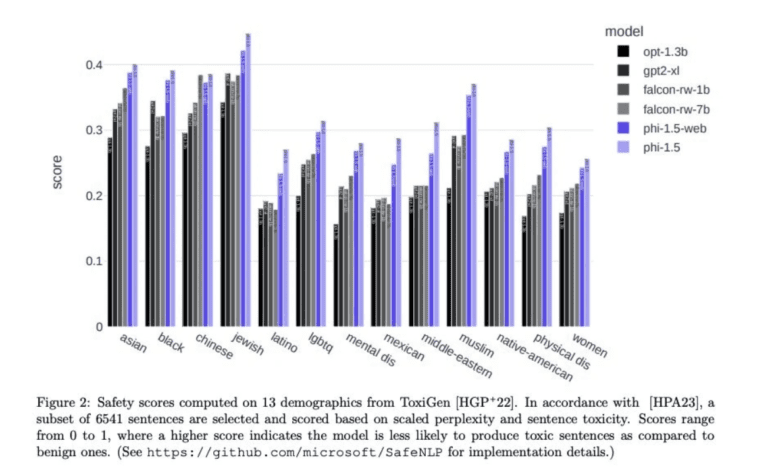TL;DR:
- Microsoft Research unveils phi-1.5, a cutting-edge language model with 1.3 billion parameters.
- Phi-1.5 outperforms Llama 2’s 7-billion parameters model on various benchmarks.
- It excels in question-answering, chat interactions, and code-related tasks.
- Trained exclusively on synthetic data from diverse sources, including StackOverflow and Python textbooks.
- Key details include its architecture, dataset size, training tokens, precision, GPUs, and training time.
- Phi-1.5 achieves near-state-of-the-art performance among models with fewer than 10 billion parameters.
- Notably, it outperforms Llama-2 7b in AGIEval score and approaches parity in the GPT4ALL’s Benchmark suite.
Main AI News:
In a remarkable display of technological prowess, Microsoft Research has once again seized the limelight. Following their earlier triumph over Meta’s LLaMA with phi-1 in July, the research team has unveiled phi-1.5, an advanced language model boasting a staggering 1.3 billion parameters. What’s more, this new creation has eclipsed Llama 2’s 7-billion parameters model on numerous benchmarks, reaffirming Microsoft’s commitment to pushing the boundaries of AI innovation.
Phi-1.5, with its awe-inspiring 1.3 billion parameters, has been meticulously engineered to excel across diverse domains, solidifying its status as the go-to choice for a myriad of applications. It shines particularly bright when confronted with queries in the question-answering (QA) format, as well as in the realms of chat interactions and code-related tasks.
While phi-1 was trained primarily on high-quality textbook data, phi-1.5 takes a distinct approach by relying exclusively on synthetic data. What truly sets phi-1.5 apart is its exhaustive training regimen, drawing from a rich tapestry of data sources. The model’s journey of learning is woven from a diverse array of data pools, including Python code snippets harvested from StackOverflow, code originating from competitive programming contests, synthetic Python textbooks, and exercises generated by the formidable GPT-3.5-turbo-0301.
Key Highlights of the Phi-1.5 Model:
- Architecture: A Transformer-based model with a pronounced emphasis on next-word prediction objectives.
- Dataset Size: Trained on a vast corpus comprising a staggering 30 billion tokens.
- Training Tokens: The model honed its skills by processing an astonishing 150 billion tokens.
- Precision: Utilizes the fp16 precision standard for optimal performance.
- GPUs: Leverages the formidable power of 32xA100-40G GPUs.
- Training Time: Achieved its remarkable capabilities through a rigorous 8-day training regimen.
The brilliant minds behind phi-1.5, the Microsoft Research team, proudly declare that this model has ascended to the echelons of near-state-of-the-art performance among models boasting fewer than 10 billion parameters. Rigorous benchmark tests, encompassing evaluations of common sense, language comprehension, and logical reasoning, unequivocally establish phi-1.5 as a formidable contender in the field of AI.
Notably, phi-1.5 has outperformed Meta’s Llama-2 7b in the AGIEval score and has edged tantalizingly close to parity with llama-2 7b in the GPT4ALL’s Benchmark suite, as quantified by the LM-Eval Harness. Phi-1.5’s prowess underscores Microsoft’s unyielding dedication to pushing the boundaries of AI capabilities and its commitment to delivering cutting-edge solutions to the world.
Conclusion:
Microsoft’s phi-1.5 represents a significant leap in language modeling capabilities. Its superior performance over Llama 2 in various domains underscores Microsoft’s commitment to pushing the boundaries of AI innovation. This development positions Microsoft as a formidable player in the evolving AI market, with phi-1.5 serving as a versatile tool for a wide range of applications. Businesses seeking advanced language models for tasks such as question-answering and code generation should closely monitor phi-1.5’s potential impact on their respective industries.

